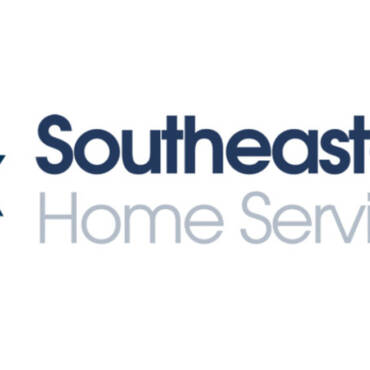With sustainability at the forefront of public discussion, many organizations have set stringent decarbonization goals with plans to reach net zero within the coming years. At the same time, these organizations are also focused on enhancing indoor air quality (IAQ) to support occupant wellness and productivity. This often involves improving filtration, increasing outside air ventilation, and raising HVAC output – all of which can consume additional energy and seemingly place these net zero goals at odds. To successfully achieve both outcomes, organizations need innovative solutions that can monitor and track key metrics to balance both health and sustainability.
Emerging building management solutions are leveraging artificial intelligence (AI) to effectively find the balance between IAQ and energy consumption. By using demand-controlled ventilation (DCV), advanced monitoring, and intelligent algorithms, these solutions can equip building managers with dynamic insights based on real-time data to help solve both challenges.
Understanding IAQ Optimization
IAQ optimization is an important first step in balancing the health and energy performance of a building. Since no two buildings or their occupancy patterns are the same, especially given today’s hybrid work policies, the path to IAQ optimization will look different for each facility.
First, it’s critical to establish a baseline of current operations by requesting an IAQ audit. During a standard audit, IAQ data is collected and analyzed to produce a set of actionable recommendations. These results provide an accurate picture of the state of a building’s IAQ and identify the greatest opportunities for improvement.
Some audits have optional enhancements, including additional reports and testing. These may include:
- Detailed building reports to assess space sizes, usage, and impact of any renovations
- Air quality testing to measure concentrations of gases, particulates, and airflow
- HVAC system inspection to assess equipment condition and check for proper operation
- Ventilation assessment to check if space and occupancy requirements are being met
Once building owners and managers receive an audit, they are better positioned to address IAQ optimization, which typically involves four key strategies that work together to minimize indoor contaminant levels:
- Filtration to remove particulate matter
- Ventilation to remove airborne pollutants
- UV-C disinfection to deactivate fungi, bacteria, and viruses
- Monitoring to help determine how much filtration, ventilation, and disinfection is required to achieve and maintain optimal levels
Monitoring can also ensure IAQ equipment and components are operating effectively and efficiently. Despite the capabilities available, many building operators are only utilizing temperature sensing or monitors that track humidity or carbon dioxide (CO2) levels.
When optimizing IAQ, it’s critical to think beyond temperature, humidity, and CO2. Measurement of a building’s air quality must also include particulate matter levels, total volatile organic compounds (TVOCs), and potential outside air hazards, such as pollen, exhaust fumes, and wildfire smoke. By measuring these factors, building owners and managers can clearly determine their building conditions and take steps to achieve optimal occupant health and comfort while minimizing energy consumption.
Comprehensive IAQ Monitoring, DCV, and AI
Once facility managers have optimized IAQ, they can then focus on balancing those outcomes with energy spend. Advanced smart building systems that combine comprehensive monitoring, demand-controlled ventilation, and AI make this possible by allowing users to evaluate data and adjust system settings to fulfill both requirements.
DCV and AI are two distinct smart building capabilities that can be used to deliver improved IAQ and reduced energy consumption. Both are enabled by IAQ monitoring, and both can be deployed to help achieve IAQ and decarbonization objectives.
Demand-Controlled Ventilation
How a building is ventilated can affect energy use and occupant health. Overventilation can result in energy waste, while poor ventilation can result in health risks, reduced cognitive ability, and lower productivity rates. DCV is a strategy that dynamically optimizes ventilation rates based on occupancy. Here’s how it works:
- Monitors are deployed and connected to the building automation system (BAS) to provide continuous measurement of CO2 levels
- The BAS responds by automatically opening and closing dampers to adjust ventilation rates as needed, based on a space’s CO2 level
- DCV can reduce energy consumption by 20% to 40% versus fixed ventilation
AI Optimization
The newest generation of advanced IAQ monitoring solutions uses machine learning, advanced analytics, and AI to allow building owners and managers to balance IAQ and energy spend. This AI technology for IAQ can overlay virtually any existing building automation system to provide:
- An IAQ score to assess the state of a building’s existing IAQ system
- A space utilization feature that measures occupancy rates and allows for dynamic ventilation adjustment
- Guidance for meeting energy spend and infection risk goals
- An infection risk score to help identify areas where airborne pathogens may be concentrated
AI-driven analytics enable dynamic ventilation adjustment according to occupancy rates and energy spend. This can be particularly valuable in office environments where occupancy rates change frequently based on a hybrid work model. To do this, the system first determines the Pareto front, or set of optimal solutions, for infection risk and energy spend. Then, it presents these choices to building managers on a dashboard, which they can select based on their organization’s goals:
- Operating conditions that prioritize reducing energy spend
- Operating conditions that prioritize minimizing infection risk
- Operating conditions that balance energy spend and infection risk
Together, these capabilities can help to dynamically balance a building’s IAQ and energy spend to protect both people and the planet.
Achieving IAQ and Energy Goals – Together
Raising awareness about DCV, IAQ monitoring, and AI optimization can enhance indoor air quality and sustainability in nearly any type of building. As a combined solution, these tools and strategies can help building managers achieve the balance between enhancing IAQ and managing energy spend to create healthier, smarter, and more sustainable buildings.
To learn more about meeting IAQ and decarbonization goals using smart building systems, visit johnsoncontrols.com/openblue/.
Whether you require installation, repair, or maintenance, our technicians will assist you with top-quality service at any time of the day or night. Take comfort in knowing your indoor air quality is the best it can be with MOE heating & cooling services Ontario's solution for heating, air conditioning, and ventilation that’s cooler than the rest.
Contact us to schedule a visit. Our qualified team of technicians, are always ready to help you and guide you for heating and cooling issues. Weather you want to replace an old furnace or install a brand new air conditioner, we are here to help you. Our main office is at Kitchener but we can service most of Ontario's cities
Source link




Add Comment